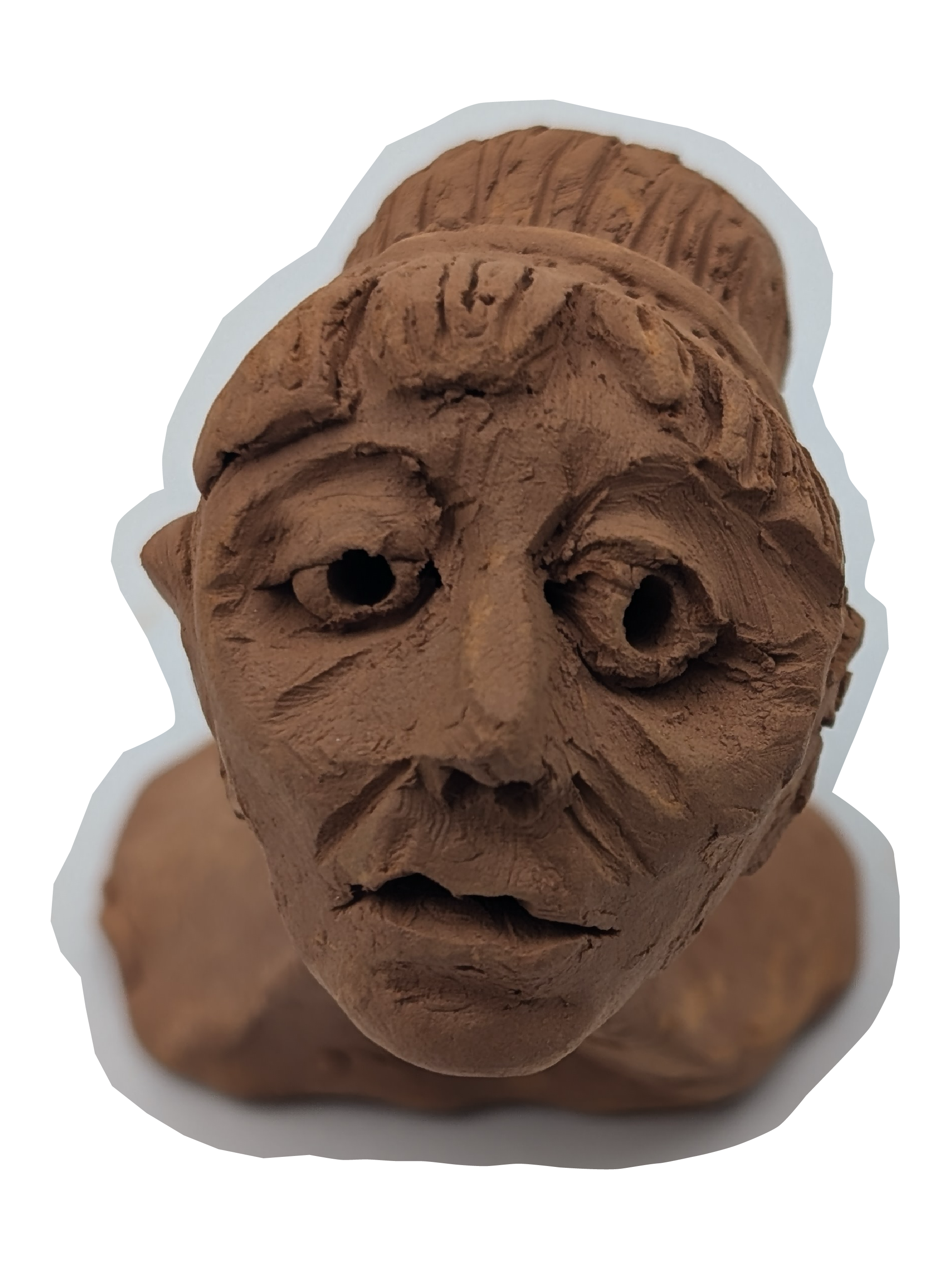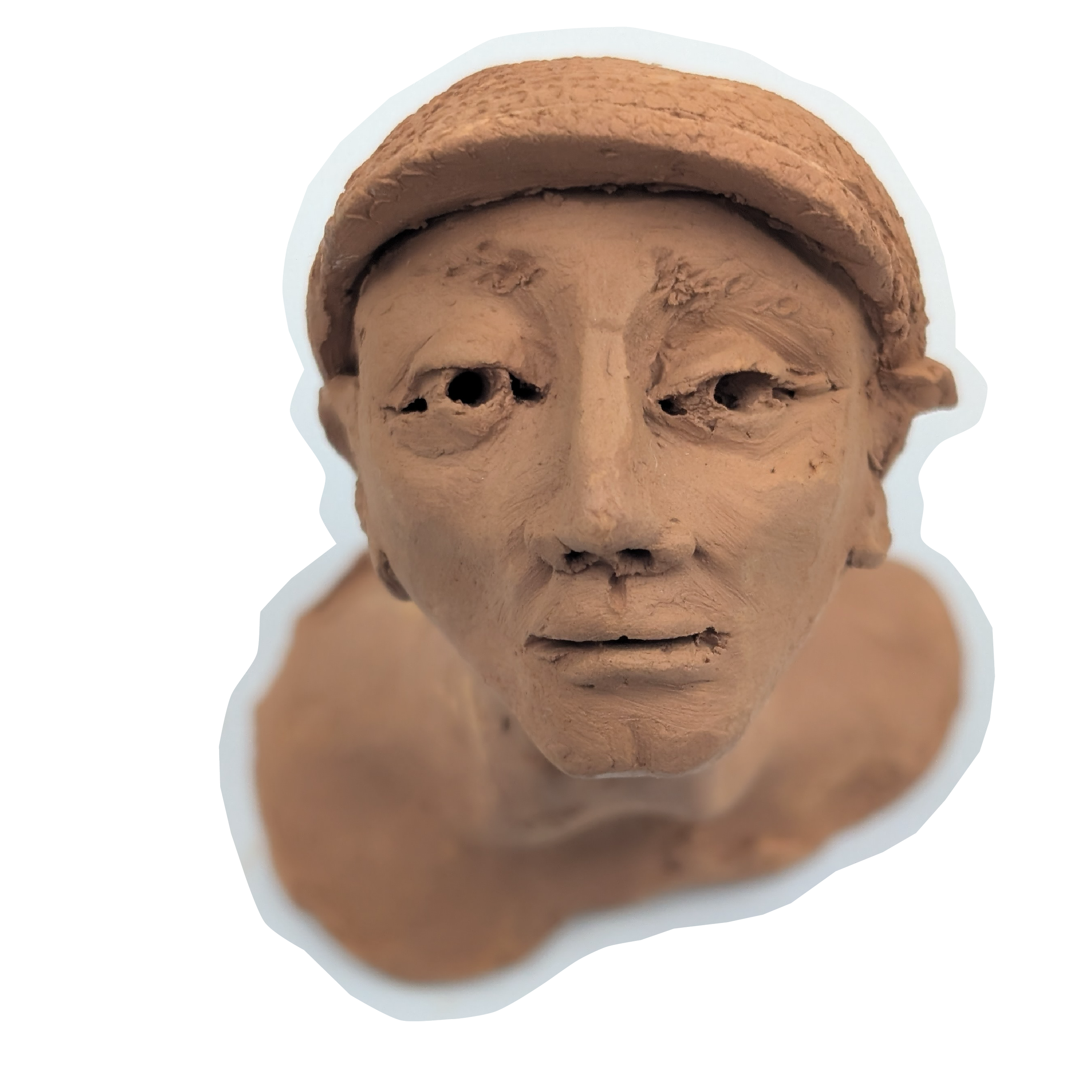Divine Creation:
The Self in Clay
Creation Myths have been the foundation of many belief systems around the world. Many have pondered questions such as: How did we get here? Who made the universe? And how did our creator make us? There are a few dominant stories - some of the water, some of the abyss. However, the loudest stories tell the tale of earth.
Divine Creations: The Self in Clay, which opened in October 2022, draws on a rich array of works from the Gardiner Museum’s permanent collection alongside contemporary pieces by artists from both near and far. By connecting historical and contemporary works, this exhibition investigates the profound role creation and self-expression play in our understanding of the human condition.
The link between clay and divine creation is not new. In countless sacred narratives from cultures around the world, deities are depicted as shaping humanity from clay. One of the most famous examples comes from the Abrahamic traditions, where the Old Testament describes God creating Adam from the dust of the earth: "And the Lord God formed man of the dust of the ground, and breathed into his nostrils the breath of life; and man became a living soul" (Genesis 2:7). Similarly, in Islamic tradition, the Qur'an states: “And certainly did We create man from an extract of clay” (Qur'an 23:12). These stories echo across cultures: in Chinese mythology, the goddess Nüwa is said to have moulded humans from yellow earth, giving them life and the ability to bear children. In Hinduism, Parvati created her son Ganesh from clay, transforming him into a living deity. Egyptian mythology speaks of Khnum, the god who forms human beings from clay before placing them in their mothers' wombs. In each of these myths, makers who mould clay mirror the actions of the divine, playing God in their own right, striving to give life to their creations.
The polygenesis of ceramics, the independent development of ceramic practices across diverse civilizations, is one of the most significant cultural innovations in human history. Ceramics emerged in numerous regions not from a single source, but through independent discovery, with the oldest known clay sculptures dating back over 14,000 years. These early creations tell many stories, often similar but distinct, shaped by individual cultures and environments.
Divine Creations: The Self in Clay explores the interconnected threads of creation, identity, and human desire, linking ancient practices with contemporary works of art. This exhibition brings ceramics into conversation across time and space, anchored in the universal desire to create, to give, and to understand life.
Creation myths have long been foundational to many belief systems around the world. Humanity has pondered questions such as: How did we come to be? Who created the universe? And how was our creator able to shape us? Across cultures, there are many dominant myths—some centred on water, others on the abyss—but some of the most resonant tales are those that center on the earth itself.
Rebecca Appleby’s raw, autobiographical series Grace was conceived after the birth of her first child, shortly before she was diagnosed with cancer. In Grace, abstract forms confront life and death, capturing the fragility of existence. Similarly, Turkish artist Gökçe Özer, whose work explores human relationships, has made the connection between clay and creation the subject of her dissertation. Together, these women provide a diverse yet unified story of self-expression that transcends time and place.
This exhibition will travel to London, Vienna, and Istanbul, where I plan to conduct an interview series with the featured artists. Through studio visits and behind-the-scenes footage, this project will further engage viewers with the artists’ creative processes. Filming will continue in Toronto with visits to the studios of Sharon Norwood and Joon Hee Kim, and the interview series will be accessible online via the Gardiner Museum's website.
In addition to contemporary works, Divine Creations includes pieces from the Gardiner Museum’s permanent collection, adding historical context to the exhibition and further illuminating the shared human desires that transcend space and time. Highlights from the collection include the Female Figure (G83.1.195), the Xochipala Style Female Figure (G83.1.7), the Effigy Jar with Anthropomorphic Mythical Being (G83.1.187), and the Dancer-musician Figural Whistle (G83.1.13), among others.
The territories where these artists reside, Britain, Austria, and Turkey, are significant not only for their contemporary cultural contributions but also for their rich historical contexts. Many of the world’s most significant cultural artifacts are housed in the British Museum, the product of centuries of British colonization and the painful histories of looting. Similarly, the Museum of Natural History in Vienna holds treasures such as the Lady of Willendorf, a paleolithic sculpture that, though not made of clay, remains a key symbol of humanity’s early attempts to describe and represent itself. In Turkey, a key region in the Fertile Crescent, the origins of ceramic vessel-making can be traced to some of the earliest known forms of functional ceramics.
Through thorough firsthand research, I aim to contextualize these pieces within a broader global narrative, creating a deeper connection between ancient and contemporary ceramic practices.
Divine Creations offers visitors to the Gardiner Museum a renewed perspective on the museum’s permanent collection, inviting them to rediscover artifacts through the lens of creation and identity. The exhibition also sparks a curiosity about our collective past and an innate desire for self-expression and creative understanding.






